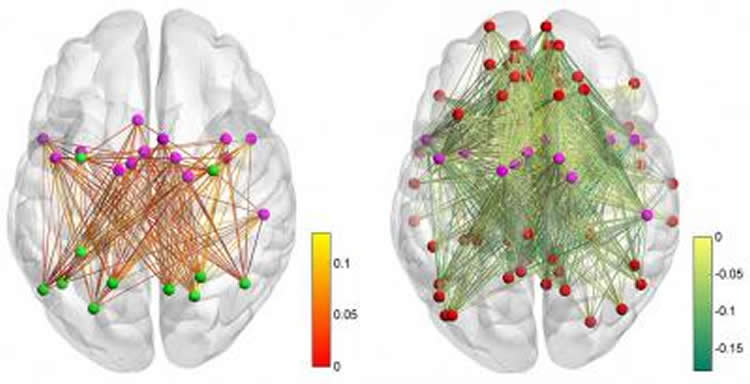Summary: A new study explores the underlying neural processes at play when embarking in short term task learning.
Source: TU Dresden.
A team of researchers at TU Dresden has examined the underlying neural processes associated with short term task learning in a current imaging study. The results of the study are published today in Nature Communications.
A collaborative team of researchers examined the neural processes responsible for the automatization of instruction-based tasks. Their research approach embraced the currently popular assumption that mental functions like memory or language emerge from specific patterns of communication within and between subnetworks of the brain.
Going beyond basic assumptions, researchers examined whether a rapid reorganization of communication patterns is possible, specifically during the rapid instruction-based automatization of novel tasks. Previous studies have mainly focused on long-term changes.

The results of this current study suggest that rapid instruction-based task automatization is facilitated by rapidly increasing communication between subnetworks associated with the transformation of visual information into motor responses. At the same time, this is accompanied by a release of network resources initially serving the controlled and attention-demanding implementation of the instructed task, while the so-called default mode network is increasingly decoupled from task-related networks.
Together, these findings suggest that rapid instruction-based task automatization is indeed reflected by a rapid system-level reorganization of network communications distributed across the entire brain.
Source: Holger Mohr – TU Dresden
Image Source: This NeuroscienceNews.com image is credited to Holger Mohr et al.
Original Research: Full open access research for “Integration and segregation of large-scale brain networks during short-term task automatization” by Holger Mohr, Uta Wolfensteller, Richard F. Betzel, Bratislav Mišić, Olaf Sporns, Jonas Richiardi & Hannes Ruge in Nature Communications. Published online November 3 2016 doi:10.1038/ncomms13217
[cbtabs][cbtab title=”MLA”]TU Dresden. “New Theory Debunks Idea That Math Abilities Are Inate.” NeuroscienceNews. NeuroscienceNews, 3 November 2016.
<https://neurosciencenews.com/short-term-learning-neural-networks-5422/>.[/cbtab][cbtab title=”APA”]TU Dresden. (2016, November 3). New Theory Debunks Idea That Math Abilities Are Inate. NeuroscienceNews. Retrieved November 3, 2016 from https://neurosciencenews.com/short-term-learning-neural-networks-5422/[/cbtab][cbtab title=”Chicago”]TU Dresden. “New Theory Debunks Idea That Math Abilities Are Inate.” https://neurosciencenews.com/short-term-learning-neural-networks-5422/ (accessed November 3, 2016).[/cbtab][/cbtabs]
Abstract
Integration and segregation of large-scale brain networks during short-term task automatization
The human brain is organized into large-scale functional networks that can flexibly reconfigure their connectivity patterns, supporting both rapid adaptive control and long-term learning processes. However, it has remained unclear how short-term network dynamics support the rapid transformation of instructions into fluent behaviour. Comparing fMRI data of a learning sample (N=70) with a control sample (N=67), we find that increasingly efficient task processing during short-term practice is associated with a reorganization of large-scale network interactions. Practice-related efficiency gains are facilitated by enhanced coupling between the cingulo-opercular network and the dorsal attention network. Simultaneously, short-term task automatization is accompanied by decreasing activation of the fronto-parietal network, indicating a release of high-level cognitive control, and a segregation of the default mode network from task-related networks. These findings suggest that short-term task automatization is enabled by the brain’s ability to rapidly reconfigure its large-scale network organization involving complementary integration and segregation processes.
“Integration and segregation of large-scale brain networks during short-term task automatization” by Holger Mohr, Uta Wolfensteller, Richard F. Betzel, Bratislav Mišić, Olaf Sporns, Jonas Richiardi & Hannes Ruge in Nature Communications. Published online November 3 2016 doi:10.1038/ncomms13217






